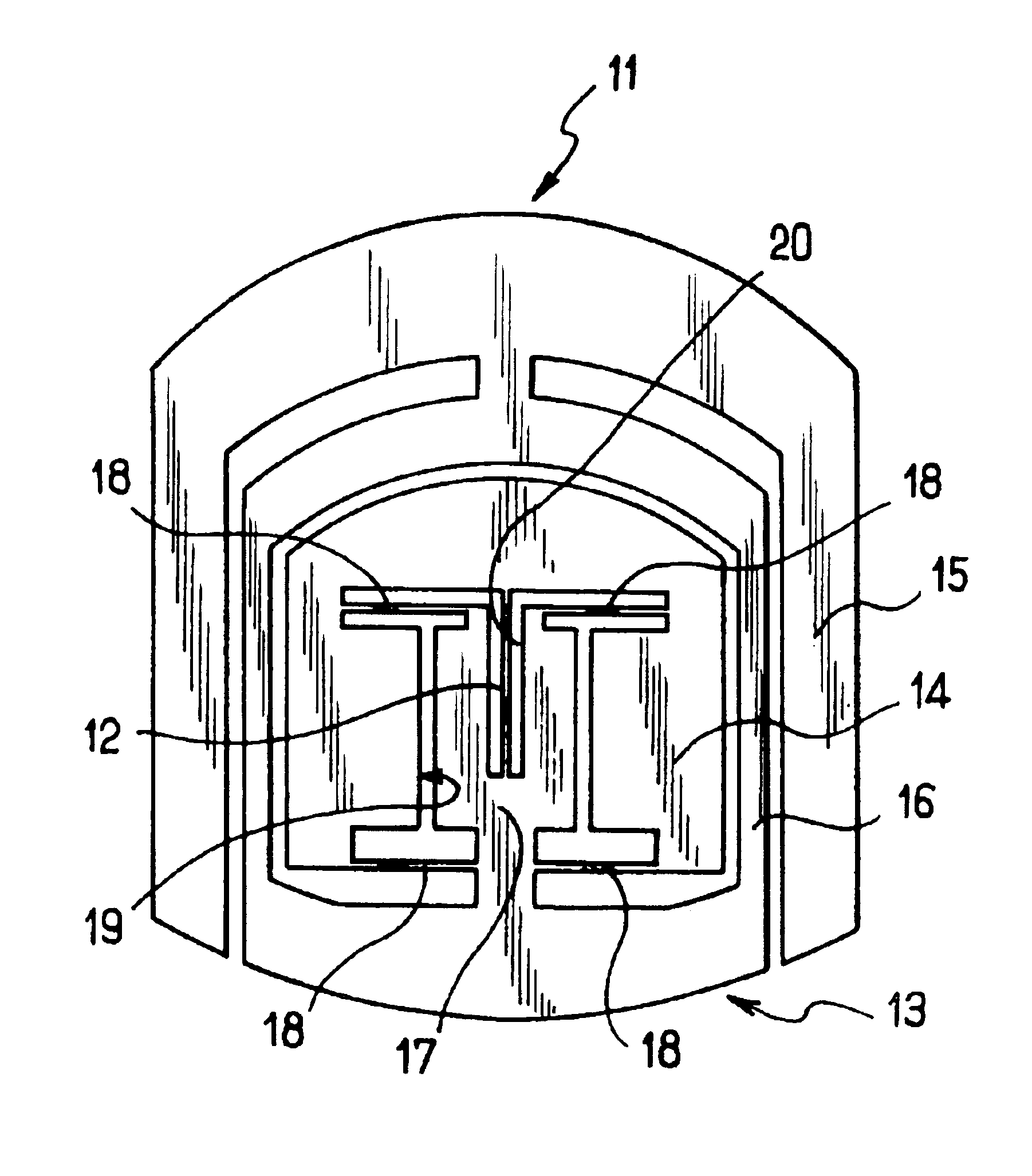Compact inertial sensor
a sensor and inertial sensor technology, applied in the direction of acceleration measurement using interia force, instruments, devices using electric/magnetic means, etc., can solve the problems of complicated installation of the cell in the vehicle that it is to occupy, plate is more difficult to machine, etc., to achieve easy assembly, small stiffness, and easy to machine the effect of said elements
- Summary
- Abstract
- Description
- Claims
- Application Information
AI Technical Summary
Benefits of technology
Problems solved by technology
Method used
Image
Examples
first embodiment
[0023]With reference to FIG. 1, the acceleration sensor constituting the first embodiment comprises a plate given overall reference 1 made of piezoelectric quartz crystal having defined therein in conventional manner a vibrating element 2 having an end 3 connected to a support element 4 designed to be fixed in a housing, and an opposite end 5 connected to a test mass 6.
[0024]The test mass 6 is hinged to the support element 4 via two pairs of link elements 7. In this case, the link elements 7 are formed by deformable tabs which are formed in the plate 1 and extend through the entire thickness of the plate 1. The link elements 7 are perpendicular to the vibrating elements 2 and the pairs of link elements 7 are disposed facing each other on either side of the support element 4. The link elements 7 are arranged to facilitate movement in translation of the test mass 6 relative to the support element in the plane of the plate 1. The sensing direction of the sensor is thus contained in sai...
second embodiment
[0031]With reference to FIG. 3, the acceleration sensor constituting the second embodiment comprises a plate given overall reference 11 made of piezoelectric quartz crystal and having defined therein a vibrating element 12 with one end connected to a support element given overall reference 13 and an opposite end connected to a test mass 14. The support element 13 has a yoke-forming portion 15 for fixing in a housing, a decoupling frame 16 having one side secured to the yoke-forming portion 15 and an opposite side connected to a solid portion 17. The test mass 14 is connected to the solid portion 17 by the vibrating element 12 and link elements 18 which are constituted by deformable tabs formed in the plate 11 and which extend perpendicularly to the vibrating element 12. The link elements 18 are arranged to facilitate movement in translation of the test mass 14 relative to the support element 13 in such a manner that the sensing direction of the sensor is contained in the plane of th...
PUM
 Login to View More
Login to View More Abstract
Description
Claims
Application Information
 Login to View More
Login to View More - R&D
- Intellectual Property
- Life Sciences
- Materials
- Tech Scout
- Unparalleled Data Quality
- Higher Quality Content
- 60% Fewer Hallucinations
Browse by: Latest US Patents, China's latest patents, Technical Efficacy Thesaurus, Application Domain, Technology Topic, Popular Technical Reports.
© 2025 PatSnap. All rights reserved.Legal|Privacy policy|Modern Slavery Act Transparency Statement|Sitemap|About US| Contact US: help@patsnap.com


